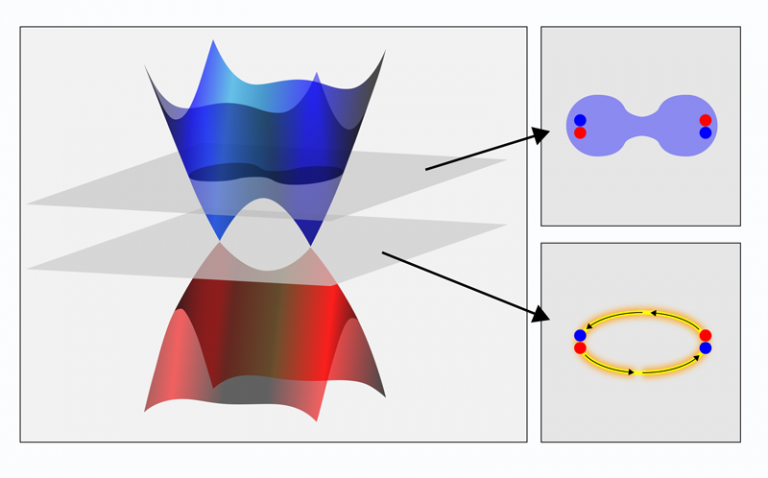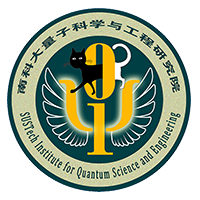New quantum transport research to power chips of the future
Improvements in quantum theory and the understanding of Dirac semimetals could lead to the enhanced performance of electronic devices that generate less heat and need less charging.
The , led by the and , at Southern University of Science and Technology (SUSTech) joined groundbreaking research with . This combined effort saw the development of a topological field-effect transistor (FET), following the demonstration of the spin momentum locking property of the Dirac semimetal and the ability to switch the spin signal.
The research was published in the high-impact academic journal under the title, “.” Their article was featured as an Editors’ Suggestion, and also has a published about it.
There is considerable research being undertaken into topological materials. Numerous studies are underway around the world to develop our understanding of their unusual topological surface states. One such area is the Fermi arc, which has several unique properties, including the spin momentum locking property. It is well known that spin, like charge, is one intrinsic property of the electron. Generally speaking, the spin can be manipulated by magnetic fields or magnetic materials. In non-magnetic materials, the spin direction is arbitrary, and thus there is no net spin polarization.
However, the Fermi arc with spin momentum locking property can have a spin-polarized current detected in the material by applying a direct current (DC). The spin polarization will also flip if the DC direction is reversed.

Figure 1: Topological field-effect transistor (FET). A direct current applied in the Dirac semimetal nanowire induces the spin polarization, which can be detected by the Co electrode. Applying a high gate voltage can kill the spin signal, forming the basis of the topological field-effect transistor.
It is not easy to detect the spin signal of the Fermi arcs in topological semimetals because the bulk stats are also conductive. It turns out that the bulk states could be far more conductive than the surface, and the Fermi arc states would be overwhelmed. Researchers have to filter out the bulk states or at least increase the ratio of the Fermi arc states.
First, they used high-quality single-crystal nanowires made of cadmium and arsenic (Cd3As2). These nanowires have a high surface area, allowing them to detect the surface state spin signal. They then used nanowires to make quantum transport devices in which the metal electrodes made of gold (Au) were deposited to inject an unpolarized DC, and magnetic metal electrodes made of cobalt (Co) were used to detect spin signals. A clear spin-related magnetic hysteresis loop was observed by the local measurement (Figure 2). They were able to confirm the spin momentum locking property by observing the change in the hysteresis loop when changing the direction of the current.

Figure 2: Demonstrating the spin momentum locking property. (a) High-resolution transmission electron microscopy (TEM) of a typical topological semimetal Cd3As2 nanowire. (b) A typical device sketch based on topological semimetal nanowires (local configuration). (c,d) The clockwise/anticlockwise hysteresis loop caused by Fermi-arc spin polarization with different current directions.
The good news is that the surface-state spin signal can be detected by the local four-terminal configuration of the nanowire device. Still, the bulk states are also conducting, which means the hysteresis loop has a significant background signal. To solve this problem, the researchers separated the current injection terminals from the voltage detection terminals with the so-called “nonlocal configuration.”
In this configuration, the carriers have to diffuse from the current terminals to the voltage terminals. But the mean free path of bulk carriers is so short that they have to undergo a series of collisions and scatterings, which make it difficult to reach the voltage terminal. The surface state carriers have topologically protected spin polarization, and thus can diffuse for a long distance. This simple but effective setup, the signals from the bulk states can be filtered out (Fig. 3). The detected experimental signal has almost no bulk background signal, making it possible to design an ideal field-effect transistor (FET) with a high on/off ratio in the next step.

Figure 3: (a) A typical device sketch based on topological semimetal nanowires (nonlocal configuration). (b) The corresponding hysteresis loop caused by the pure Fermi-arc spin signal.
The research team went on to find that the gate voltage can further regulate the presence or absence of the Fermi Arc spin signal, thus acting as a transistor. It is a unique finding, different from other topological materials. When the Fermi level is close to the Dirac point, there are two Fermi Arcs. However, once the Fermi level crosses the Lifshitz phase transition point, the Fermi Arc disappears, with no spin signal. The team found that the spin signal indeed disappears when a gate voltage of ~10V is applied. The corresponding on/off ratio with nonlocal configuration could be over 30000%. These findings indicate that topological field-effect transistors (FETs) can be developed. The research team has already created one, and applied for a patent (Chinese patent: ), providing numerous opportunities for practical application of topological spintronics.

Figure 4: Schematic diagram of energy bands in Dirac semimetals
Topological FETs tend to generate less heat and consume less power, making them ideal candidates for smaller integrated circuits. The research team will continue to examine this field and refine their research to hopefully overcome one of the major problems associated with Moore’s law.
The co-first authors of the papers were SIQSE and . The correspondent author was from the . Zhimin Liao and supervised the whole project. Other contributing authors were from the , the Frontiers Science Center for Nano-optoelectronics, and the Collaborative Innovation Center of Quantum Matter.
The research received support from the National Key Research and Development Program of China and the National Natural Science Foundation of China.
Paper link:
Physics Viewpoint report:



